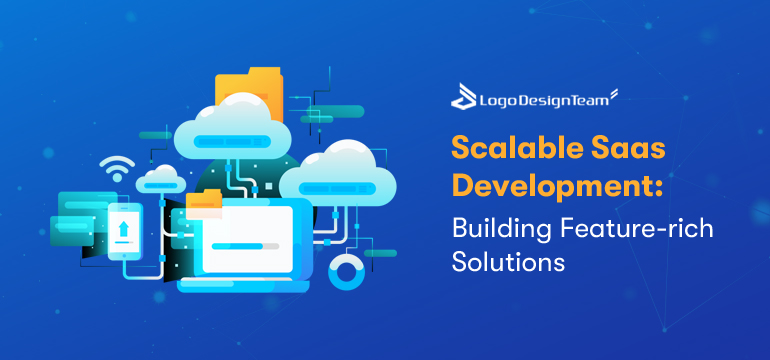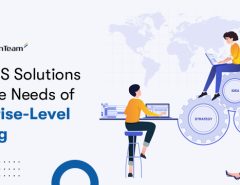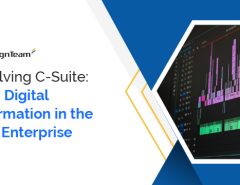Are you considering beginning a SaaS business? You should be! Last year, the global SaaS market generated 167 billion U.S. dollars in revenue. It’s a great choice for entrepreneurs to get their feet wet, as the costs associated with developing and running SaaS businesses are usually much lower than those of physical goods.
But creating a successful SaaS business requires careful planning and diligent execution—specifically, building feature-rich solutions that scale with customer demand. This means designing software features that address consumer needs while making sure the system can expand without breaking down over time as more users adopt it.
However, it’s not enough just to build a great product and launch it into the market; these days, scalability is key. It’s no use having a fantastic solution if you can only serve a few customers simultaneously due to inflexible architecture or limited resources.
In this post, we’ll provide an overview of scalable approaches for developing feature-rich SaaS solutions. We will focus on exploring best practices when dealing with:
- Hosting & Application Architecture: Exploring options such as serverless computing, cloud-based hosting models, managing scalability parameters, and more!
- Platform Components & Features: How does one ensure that features like user authentication, data & content management, and integration remain scalable?
- Test Automation & Release Procedures: What techniques are available for testing against different load scenarios? How do you ensure consistent releases without sacrificing quality?
This article aims to help companies gain a better understanding of foundational aspects related to designing efficient architectures capable of supporting business scale ambitions.
Hosting & Application Architecture
When it comes to developing feature-rich SaaS solutions, the architecture is absolutely essential. There is a wide range of hosting and application architectures that can be chosen from, so let’s take a closer look at some of the most popular options.
Serverless Computing
Using serverless computing (or Function as a Service) for your SaaS solution allows you to get rid of managing servers altogether; instead, all your code will run in an on-cloud infrastructure designed with scalability in mind.
As the need grows, all you have to do is keep uploading new services or expanding existing ones within minutes without worrying about downtime or performance. The pay-per-use model also makes it possible to manage costs because you will only ever pay for what’s used!
Cloud-Based Hosting Models
Cloud-based remains one of the most popular ways of hosting applications due to its scalability and agility features. This infrastructure lets firms rapidly scale up their serving capacity on customer demand without considerable investments in hardware and maintenance cost increase.
Features like containerization and virtual device help optimize resource allocation with maximum efficiency while ensuring flexibility during peak times.
Managing Scalability Parameters
Another important aspect of scalability is balancing the load across multiple instances such that performance and stability are maintained. This can be done through various mechanisms like horizontal scaling (increasing or decreasing the number of machines depending on demand) or autoscaling (being able to scale based on current server use automatically).
Depending on your software stack – web servers, databases, caching layers – you may need specific strategies for load balancers to achieve optimal performance while adding new services or removing existing ones.
Platform Components and Features
Apart from architecture, feature design also plays a key role in developing scalable SaaS solutions. Here are some examples of features often included and how they should remain scalable:
- User Authentication: Make sure to leverage a single sign-on mechanism for authentication so users have access from any device using a single login credential. Such systems will also help increase security since any user information being shared with external parties would remain encrypted at all times.
- Data & Content Management: Designing data structures to scale up and down efficiently helps support large volumes of customers without significantly affecting responsiveness. Using an API-based MVP pattern instead of hardcoding everything greatly reduces maintenance time, while settings up APIs allow third parties more quickly access parts of the system (e.g., billing integration). Implementing an API monitoring tool ensures that these APIs remain reliable, secure, and performant as usage scales.
- Integration: Make sure your platform is designed in a way that developers can easily integrate with external services. This will help expand the customer base by allowing for new and innovative solutions to be built on top of the existing architecture. Plus, it’ll also allow customers to access more of the platform’s features in a much quicker fashion.
The market for the providers or other systems can be easily integrated with your SaaS solution. Ensure that most integrations are done through single systems, as building custom .NET feature for each connection might lead to higher maintenance costs and difficult scalability paths ahead.
Test Automation & Release Procedures
Testing is not only necessary for ensuring a great quality product you launch into the market but also essential for measuring the stability of an application under different load scenarios. Here are some useful tips when planning out your test automation strategy:
Leverage tools such as testRigor, Selenium, or Robot Framework to automate processes, which help reduce manual testing and ensure all functions remain working across different platforms.
Create reusable testing scenarios so they can be executed frequently without requiring too much effort on the QA team member’s part; keeping tests short makes it easier to execute them on a regular basis.
Put in place methods to monitor performance using metrics like API throughput (how many requests/second) or response time (how quickly they appear). This ensures that problems can be identified quickly before users start noticing them, reducing their level of satisfaction more drastically.
Some of the best antivirus software is also an excellent tool for monitoring the performance and security of your system, as it can track any malicious activities from potential attackers.
In terms of releases, security issues should also be considered seriously, as malicious third parties could exploit vulnerabilities exposed by mistakes during the deployment process.
Establishing procedures helps minimize the impact of such issues on customers and businesses; it might include levels of verification, like establishing automation tests before going into production or setting up a staging environment for testing features away from the actual application.
The Future of SaaS
In the near future, SaaS products will increasingly be deployed across multiple clouds or data centers. As a result, scalability and performance, as well as security concerns in these hybrid and distributed architectures, will become even more important.
New technologies like blockchain and serverless computing will revolutionize the way services are built and delivered, enabling new use cases for decentralized applications (DAPPs). The notion of customizable software-as-a-service may shift towards productized platforms where companies have access to modules they can quickly combine into single solutions with limited development times.
Wrap Up
There are many aspects to consider when trying to develop scalable SaaS solutions, as good feature design is also essential for dealing with high usage efficiently.
Planning out architecture, hosting models, platform components, and features while keeping test automation and release procedures in mind can help companies create robust and reliable platforms which can sustain growth ambitions even during uncertain times.




